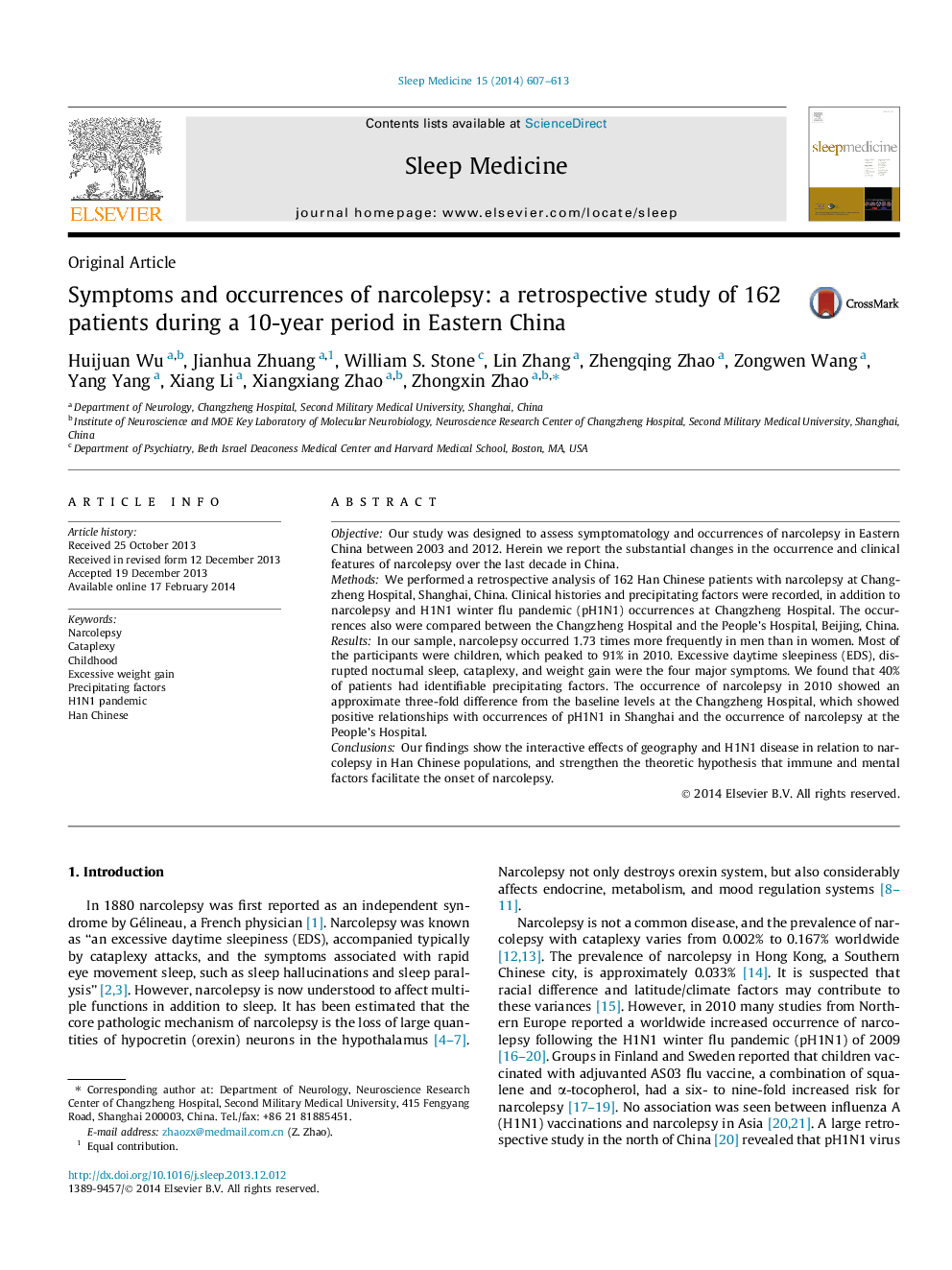| Article ID | Journal | Published Year | Pages | File Type |
|---|---|---|---|---|
| 3176111 | Sleep Medicine | 2014 | 7 Pages |
ObjectiveOur study was designed to assess symptomatology and occurrences of narcolepsy in Eastern China between 2003 and 2012. Herein we report the substantial changes in the occurrence and clinical features of narcolepsy over the last decade in China.MethodsWe performed a retrospective analysis of 162 Han Chinese patients with narcolepsy at Changzheng Hospital, Shanghai, China. Clinical histories and precipitating factors were recorded, in addition to narcolepsy and H1N1 winter flu pandemic (pH1N1) occurrences at Changzheng Hospital. The occurrences also were compared between the Changzheng Hospital and the People’s Hospital, Beijing, China.ResultsIn our sample, narcolepsy occurred 1.73 times more frequently in men than in women. Most of the participants were children, which peaked to 91% in 2010. Excessive daytime sleepiness (EDS), disrupted nocturnal sleep, cataplexy, and weight gain were the four major symptoms. We found that 40% of patients had identifiable precipitating factors. The occurrence of narcolepsy in 2010 showed an approximate three-fold difference from the baseline levels at the Changzheng Hospital, which showed positive relationships with occurrences of pH1N1 in Shanghai and the occurrence of narcolepsy at the People’s Hospital.ConclusionsOur findings show the interactive effects of geography and H1N1 disease in relation to narcolepsy in Han Chinese populations, and strengthen the theoretic hypothesis that immune and mental factors facilitate the onset of narcolepsy.
